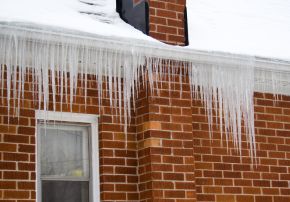TUESDAY, APRIL 1, 2025
 WHAT IS AN UMBRELLA POLICY? WHAT IS AN UMBRELLA POLICY?
Your home, auto, farm or business policies cover you for certain risks and specific limits. But sometimes you might need more coverage than these policies can provide. An Umbrella policy is designed to protect you against a catastrophic lawsuit or judgment. It provides an additional layer of coverage over and above the liability coverage found in your home, auto, farm, or business liability policies.
WHY DO I NEED AN UMBRELLA POLICY?
An Umbrella policy can help to protect you from a potential financial catastrophe. In today’s litigious society, it’s not uncommon to hear about very large jury awards. An Umbrella policy can help to protect the assets that you’ve worked hard for and accumulated over the years. Review the liability limits listed in your home, auto, farm, or business policies – if a large judgment was awarded against you, how would you pay it?
WHAT DOES AN UMBRELLA LIABILITY POLICY COVER?
An Umbrella liability policy covers you and your family or your business for most bodily injury, property damage and personal injury losses. Defense coverage is available for defending claims and suits if coverage applies. Defense costs are paid in addition to the policy limit. Limits of $1 million, or more, are available if you qualify. No matter where you travel, your Umbrella liability policy is with you. It covers you anywhere in the world. We offer Personal, Farm, and Commercial Umbrella Liability policies. Talk with your agent to learn more about Goodville Mutual’s Umbrella liability policy options. We developed these questions and answers to help you think about how an Umbrella policy might be valuable to you. We recommend that you seek professional advice from your attorney or accountant as it applies to your specific legal and financial needs.
Posted 2:50 PM
SATURDAY, MARCH 1, 2025
 What will cause my insurance premium to increase? What will cause my insurance premium to increase?
A number of factors and characteristics come into play when Penn National Insurance calculates your auto insurance premium. Many of the factors are changes you may make:
- Increasing coverages such as Bodily Injury and Property Damage Liability, Medical Payment and Personal Injury Protection options
- Lowering your deductibles for Collision and Other-Than-Collision coverages
- Changing the use of your vehicle, including the number of miles driven annually or to work
- Adding a new driver, particularly one who is young or a driver with limited driving experience
- Moving to an area where insurance rates are higher
- Purchasing a new vehicle and adding it to the policy
- Accidents or moving violations
Additionally, insurance companies may increase rates due to the rising costs of claims (medical bills, vehicle repairs, lawsuits, etc.). A company’s rate change can only be applied at the policy’s next renewal date (not mid-term), and the rate change requires approval from the state insurance department.
Used with permission from Penn National Insurance
Posted 1:12 PM
WEDNESDAY, JANUARY 15, 2025
 Each person has a unique reason for getting life insurance, but those reasons can be distilled into one: They love someone and want to make sure they are protected financially. Let us help you ensure that a promise made is a promise kept with life insurance. Click here to request a quote. Each person has a unique reason for getting life insurance, but those reasons can be distilled into one: They love someone and want to make sure they are protected financially. Let us help you ensure that a promise made is a promise kept with life insurance. Click here to request a quote.
Here's to appreciating all the little things we do and those everyday moments that shape our lives and give it meaning. In fact, our days are often filled with simple acts of love, one followed by another, that over time create a better future.
Getting life insurance is like that too. It's a simple act you can take today to ensure your loved ones are protected financially tomorrow.
It's time to protect those everyday moments with life insurance.
Take a few moments now to see how we can help you protect those you love.
Posted 7:48 PM
WEDNESDAY, JANUARY 15, 2025
 Heat your home safely this winter with these tips: Heat your home safely this winter with these tips:
- Keep anything that can burn at least three feet from any heat source, including fireplaces, wood stoves, radiators or space heaters.
- Install and test carbon monoxide alarms at least once a month.
- Have a qualified professional clean and inspect your chimney and vents every year.
- Store cooled ashes in a tightly covered metal container and keep it outside at least 10 feet from your home and any nearby buildings.
- Plug only one heat-producing appliance such as a space heater into an electrical outlet at a time.
Reduce Risk of Dying in Home Fires with Smoke Alarms
The risk of dying in a home fire is cut in half with working smoke alarms. Keep your family safe with these tips:
- Install smoke alarms in every sleeping room and outside each separate sleeping area.
- Install alarms on every level of the home, including the basement.
- It is best to use interconnected smoke alarms so that when one smoke alarm sounds, they all sound.
- Test all smoke alarms at least once a month.
Used with permission from Penn National Insurance
Posted 3:25 PM
WEDNESDAY, JANUARY 1, 2025
 Winter weather brings snow, ice, and fluctuating temperatures that can wreak havoc on your home — especially your roof. One major hazard to watch for is ice dams. Left unchecked, ice dams can lead to costly roof repairs, water damage, and even structural issues. Winter weather brings snow, ice, and fluctuating temperatures that can wreak havoc on your home — especially your roof. One major hazard to watch for is ice dams. Left unchecked, ice dams can lead to costly roof repairs, water damage, and even structural issues.
What is an Ice Dam?
An ice dam is a ridge of ice that forms at the edge of a roof and prevents melting snow from draining properly. This trapped meltwater can work its way under your shingles and into your home, causing structural or water damage to your ceilings, walls, and more.
What Causes Ice Dams?
Ice dams occur when temperature differences on your roof cause melting snow to refreeze at the eaves. As snow melts and water flows from warmer areas of the roof to its colder edges, the water refreezes and gradually forms a ridge of ice. Key contributors to ice dam formation include:
- Inadequate ventilation: Improper airflow allows warm air to accumulate in the attic.
- Poor attic insulation: Heat escapes from your home, warming the roof and causing snow to melt.
- Air leaks: Gaps around vents, chimneys, and other fixtures let warm air escape.
Do Ice Dams Cause Damage?
The weight of an ice dam can strain your roof, but that’s only the beginning of the problems they can create. Here are some common issues related to ice dams:
- Shingle damage: Ice dams can lift shingles as they form and expand, compromising their protective seal.
- Roof and gutter stress: The weight of ice dams can damage your roof and gutters, and in some cases, even pull gutters off your house.
- Water intrusion: Meltwater can seep under shingles, causing damage to your walls, insulation, floors, and ceilings.
- Mold formation: Trapped moisture from water intrusion creates an environment where mold can grow and thrive.
How do I Spot an Ice Dam?
Ice dams can easily go unnoticed, but these warning signs often indicate a potential problem:
- Icicles on the roof or gutters: Icicles form under similar conditions that allow ice dams to take hold.
- Snow buildup: A clear roof higher up with snow and ice buildup near the roof’s edge suggests uneven roof temperatures.
- Leaks or water stains: Damage to interior walls could be the result of water seeping in through compromised shingles.
How do I Remove an Ice Dam?
If you notice any warning signs, prompt ice dam removal can help prevent further damage. Here are a few quick fixes you can try to address the problem:
- Use a roof rake: Remove snow from the roof’s edge to minimize the source of melting water.
- Apply calcium chloride: Use a de-icing product designed for roofs. Avoid rock salt, which can damage paint and metal.
- Install heated cables: Mount temporary heating cables along the edge of your roof and through the downspout to create channels for proper water runoff.
If the situation is severe, it’s best to leave the ice dam removal to the professionals. Chipping away at ice dams can damage shingles and increase the chance of leaks. Plus, working on a roof in winter conditions can be dangerous. A professional has the tools and expertise to handle the job safely and effectively.
How can I prevent an Ice Dam?
Getting rid of ice dams permanently is simple in theory: keep the entire roof the same temperature as the eaves. Achieving this requires proper airflow, insulation, and ventilation. Here are a few long-term solutions to help reduce or eliminate ice dams:
- Improve insulation: Add insulation to the attic floor to keep heat from escaping through the attic.
- Enhance ventilation: Install soffit and ridge vents to regulate attic temperatures. Baffles may be necessary to improve air circulation.
- Stop air leaks: Seal any gaps around vents, electrical cables, chimneys, and recessed lighting to keep warm air inside your home.
- Keep gutters clear: Regularly remove leaves, sticks, and other debris from gutters and downspouts to allow proper drainage of melting snow.
- Remove snow buildup: Keep snow on your roof to a minimum by using a roof rake, especially after a heavy snowfall.
- Cap the attic hatch: Insulate and weatherstrip attic hatches to keep warm air from leaking into the attic.
- Exhaust properly: Ensure that exhaust ducts, including kitchen, bathroom, and dryer vents, lead outdoors through either the roof or walls, but never through the soffit.
used with permission from Westfield Insurance
Posted 12:38 PM
|
Blog Archive
2025
2024
2023
2022
2020
2019
2018
2017
2016
|